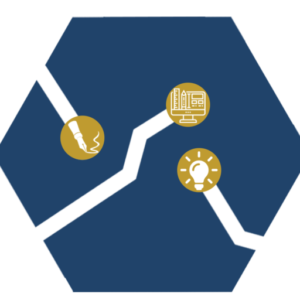 My father built additions to people’s houses. Before beginning a new job, he asked himself lots of questions. These questions guided him as he progressed on any project. What tools and materials do I need to build this addition? Exactly what are the owners looking for with this addition? How can I be sure I’m building something that will exactly fulfill their needs and expectations? Will the addition pass code inspection?
My father built additions to people’s houses. Before beginning a new job, he asked himself lots of questions. These questions guided him as he progressed on any project. What tools and materials do I need to build this addition? Exactly what are the owners looking for with this addition? How can I be sure I’m building something that will exactly fulfill their needs and expectations? Will the addition pass code inspection?
Developing new training courses is another area where asking questions can be extremely beneficial. In fact, when you’re tasked with building a learning addition (a new training course) for a company, it’s helpful (and self-instructive) to ask as many questions as possible. Here are some ideas for the types of questions you might want to ask yourself as you prepare and run a new training course:
Question 1 – What tool will I be using to construct the training course?
If a particular course construction tool worked well for you in the past, stick with it – PowerPoint, Articulate, Captivate, etc. If what you used previously left something to be desired, try something new. But decide and carry forth; changing horses is fine on dry land but not in mid-stream where currents swirl and development deadlines loom.
Question 2 – What does your audience need to learn in order to do their job or better use your product?
This question is more than essential, it’s nearly everything. The purpose of any course is not only for people to learn, but to learn specific things to improve performance. Let this be your guiding light, your North Star, telling you what content to include — and what NOT to include — in the course. Stick to what the students need to learn, and your course will be free of unneeded and wasteful content. Do you want to call it “course objectives?” Fine, call it that, but just never stop thinking about what people need to know. (For an interesting perspective, read “Focus on Skill Mastery, not Knowledge Acquisition” by Tarmo Toikkanen.)
Question 3 – Who is your target audience?
Who will be taking this course? What is their job function? What problems do they have performing their job now? Which learning style best suits them? What is their comprehension level and learning style? (Check out an instructive article on this subject by Nell Gelhouse, “Using Training Audience Analysis To Inform Training Design”) Ask these smaller questions to answer the bigger one: Who is your target audience? Write to them. Don’t waste their time with unrelated content or long, uninteresting courses. Ask their managers what they need to reach their goals, and keep it short and interesting. Get answers and develop courses with those answers in mind.
Question 4 – How will I prove that this course helps people do their job better?
How you will prove that the course is doing that? You want to prove that the people who took your course gained new knowledge or skills that will help them do their job or use your product better. Do you want assessments built into the learning module to test knowledge gained in real-time? Will their managers allow you to observe their work both before and after your students have taken your course? (For more see How to Measure Training Results: A Practical Guide to Tracking the Six Key Indicators by Jack J. Phillips and Ron Drew Stone.)
Question 5 – Is my course sequentially correct?
Nearly as important as including the right content (meaning only content that will help your audience do their job or use your product better!) is arranging the content in the proper order. After the first block of content students learn, every block after that should build on the previously learned content. Don’t show a learner how to pick tomatoes at the peak time until you’ve shown them how to plant the seed, water it, support the growing shoots, and remove damaging insects. Keeping your course sequentially correct will make it more logical, help you determine if anything important is missing, and help students understand the direction they are going toward their learning goal, which, again, is doing their job better. For a good perspective on sequencing and planning aspects of training courses, see “Planning a Training Session” by The Mind Concept Team.
Question 6 – Which of the two classroom types am I creating?
There are only two types of classrooms on this planet. Walk down the hallway of any school during class time and you will see lots of examples of both. In one type of classroom, the students are slumped back in their seats with their eyes glazed over, listening (or pretending to listen) to a teacher drone on about some subject matter. In the other type of classroom, students are leaning forward, elbows on the desktop (if they’re not actually standing which is even better), eyes alert and full of intent, and actively engaged in some type of hands-on work. That’s it, there are no other classroom types. I won’t even say which one is better. Just make sure you keep asking yourself which of the two classroom types will someone see when they’re walking past students taking your course. Develop your content, all of it, with this type of classroom in mind. (Oh, and if students are sleeping through your training class, guess whose fault it is?)
Conclusion
These are just some of the questions it might be valuable to ask yourself as you plan for and develop your training course. The links provided offer more information about creating training courses.
Better yet, contact us! Our experienced instructional designers create effective and engaging eLearns that help you save money and time.
Related Blogs
Top 3 Benefits of Using an LMS for the Organization of Training



